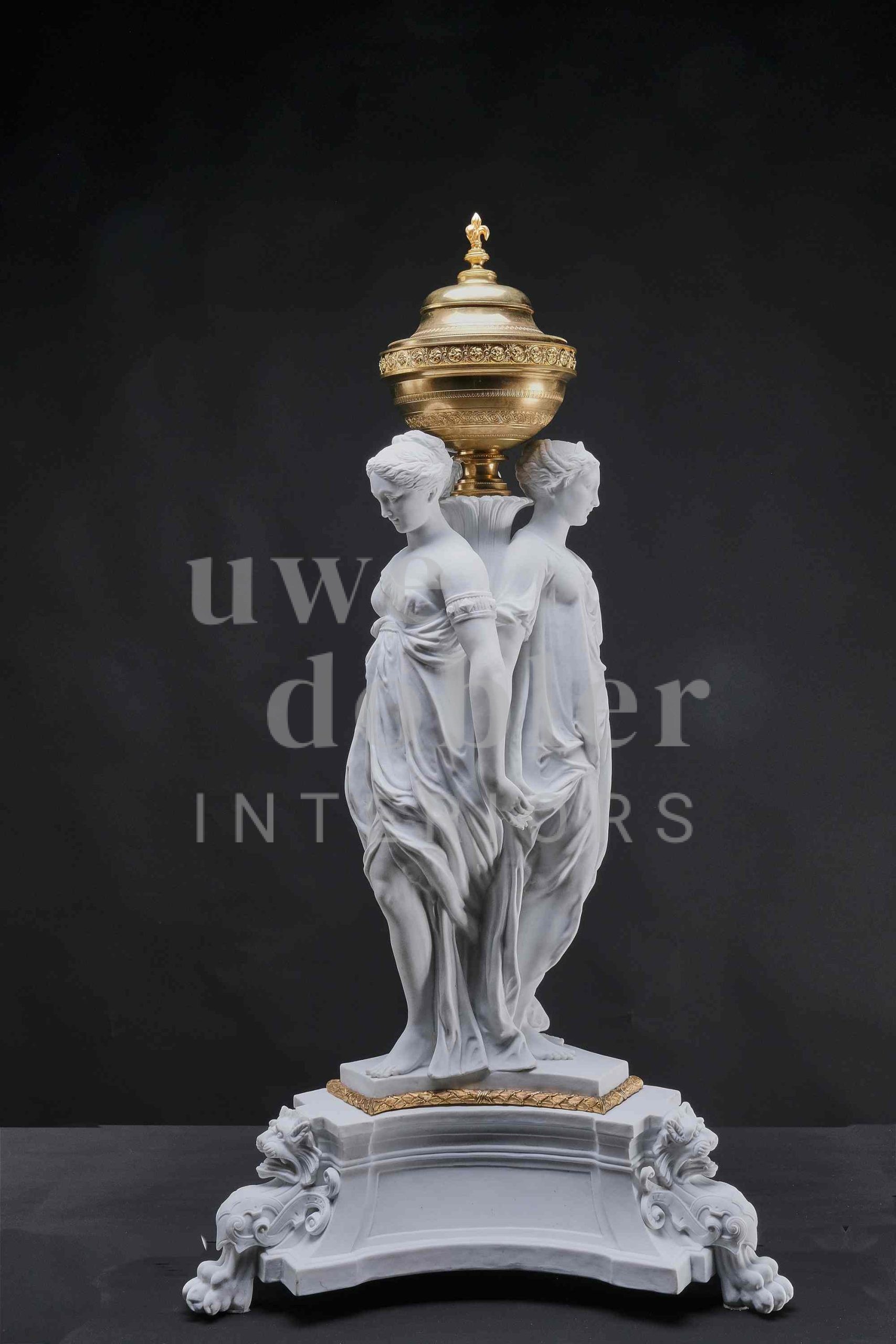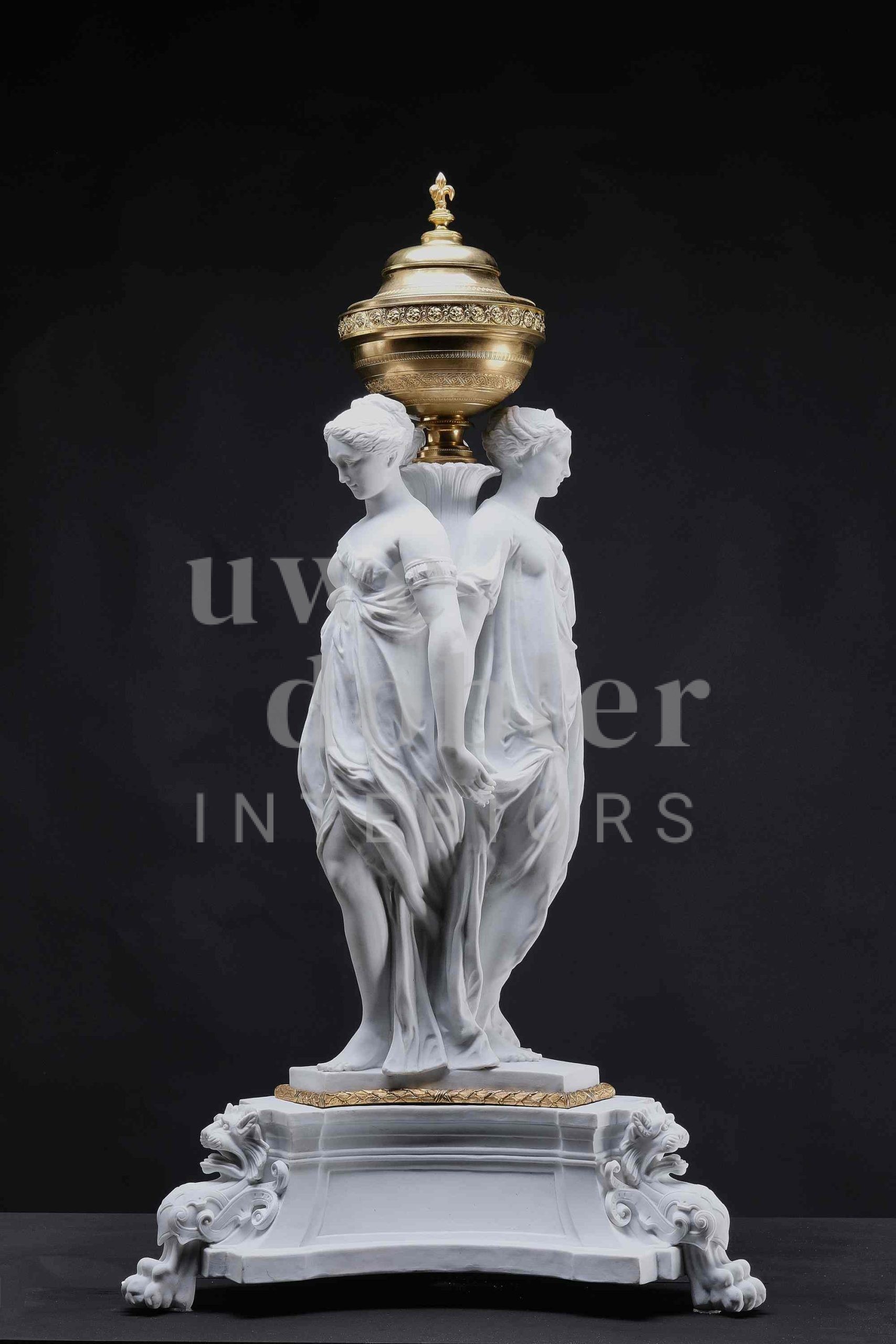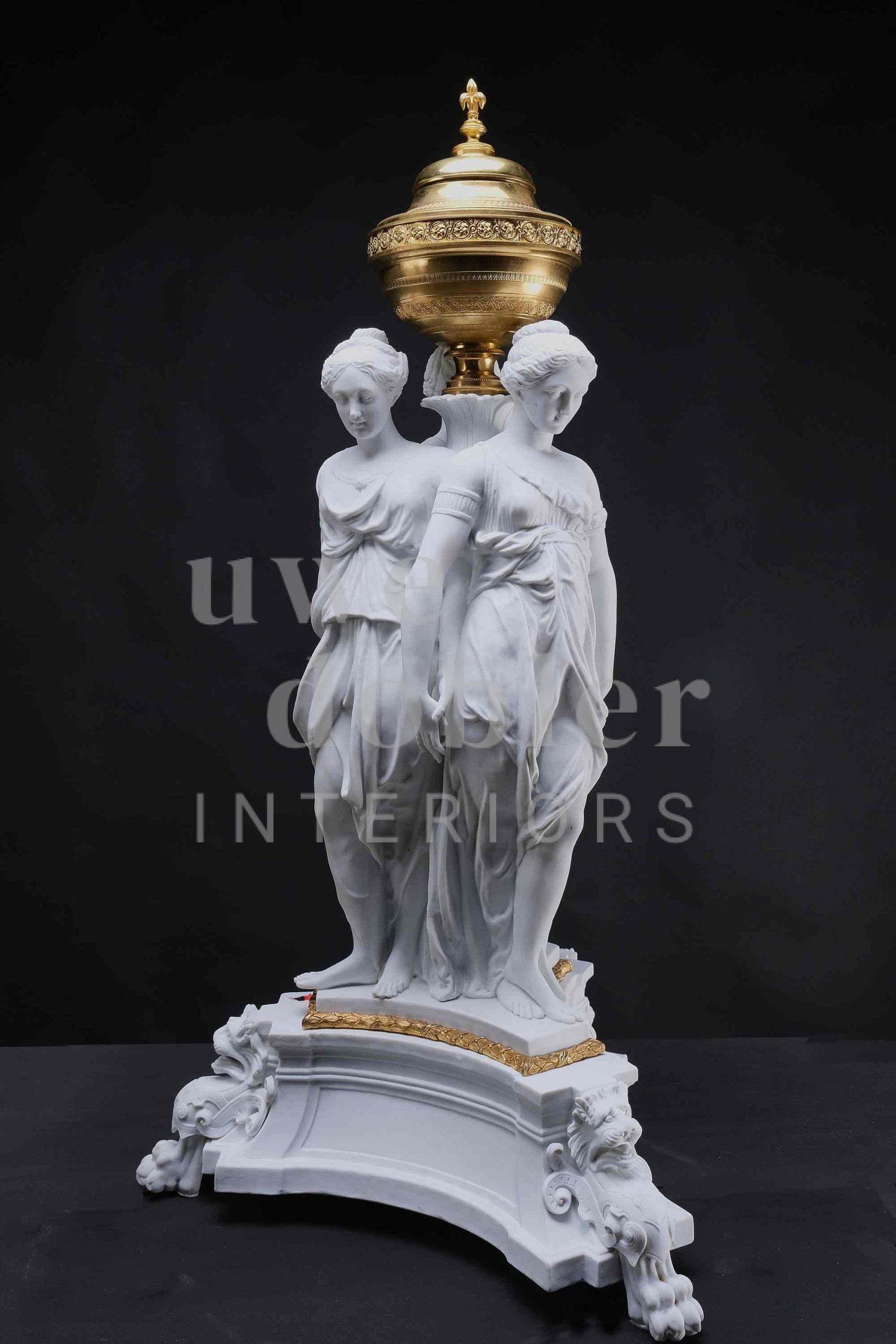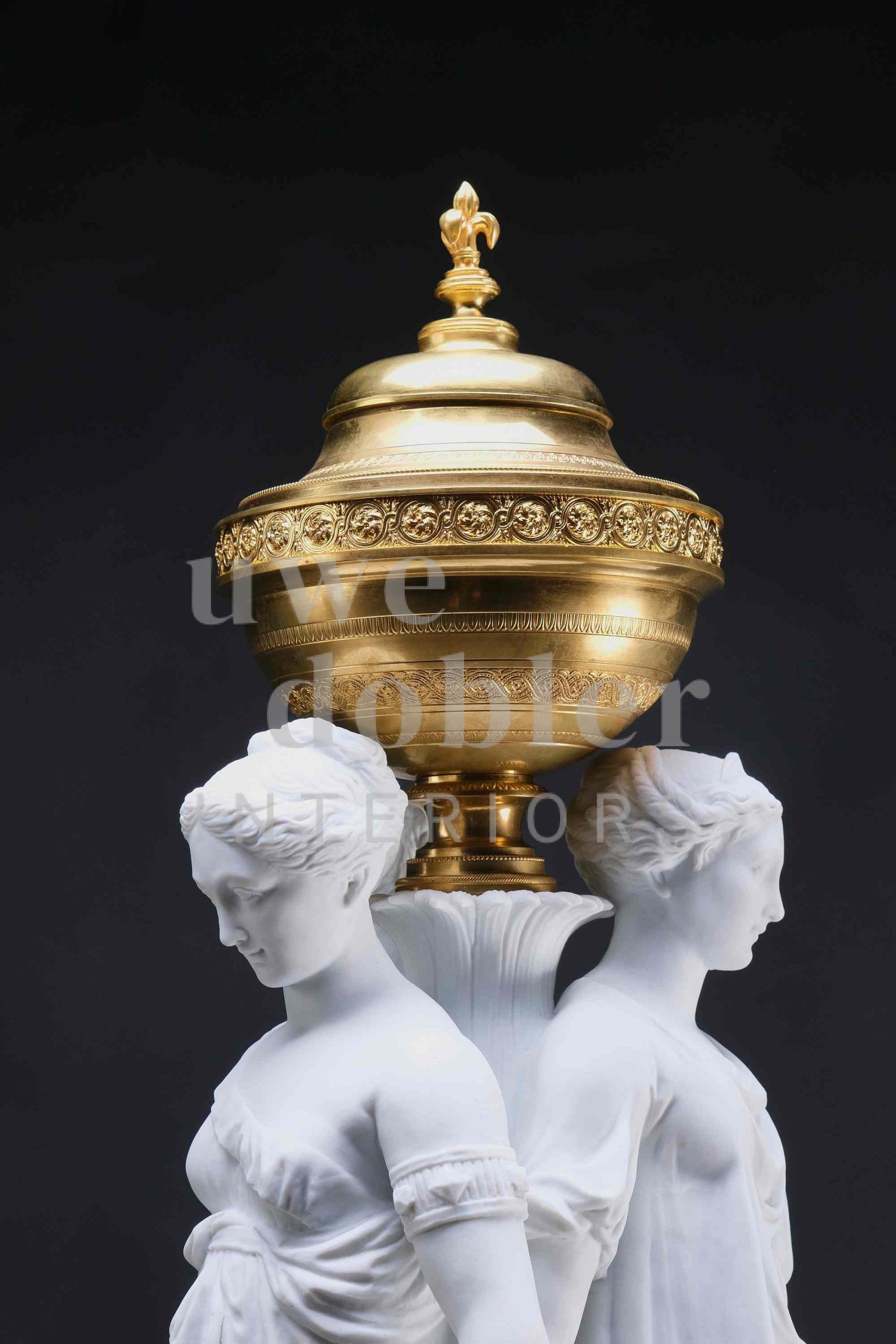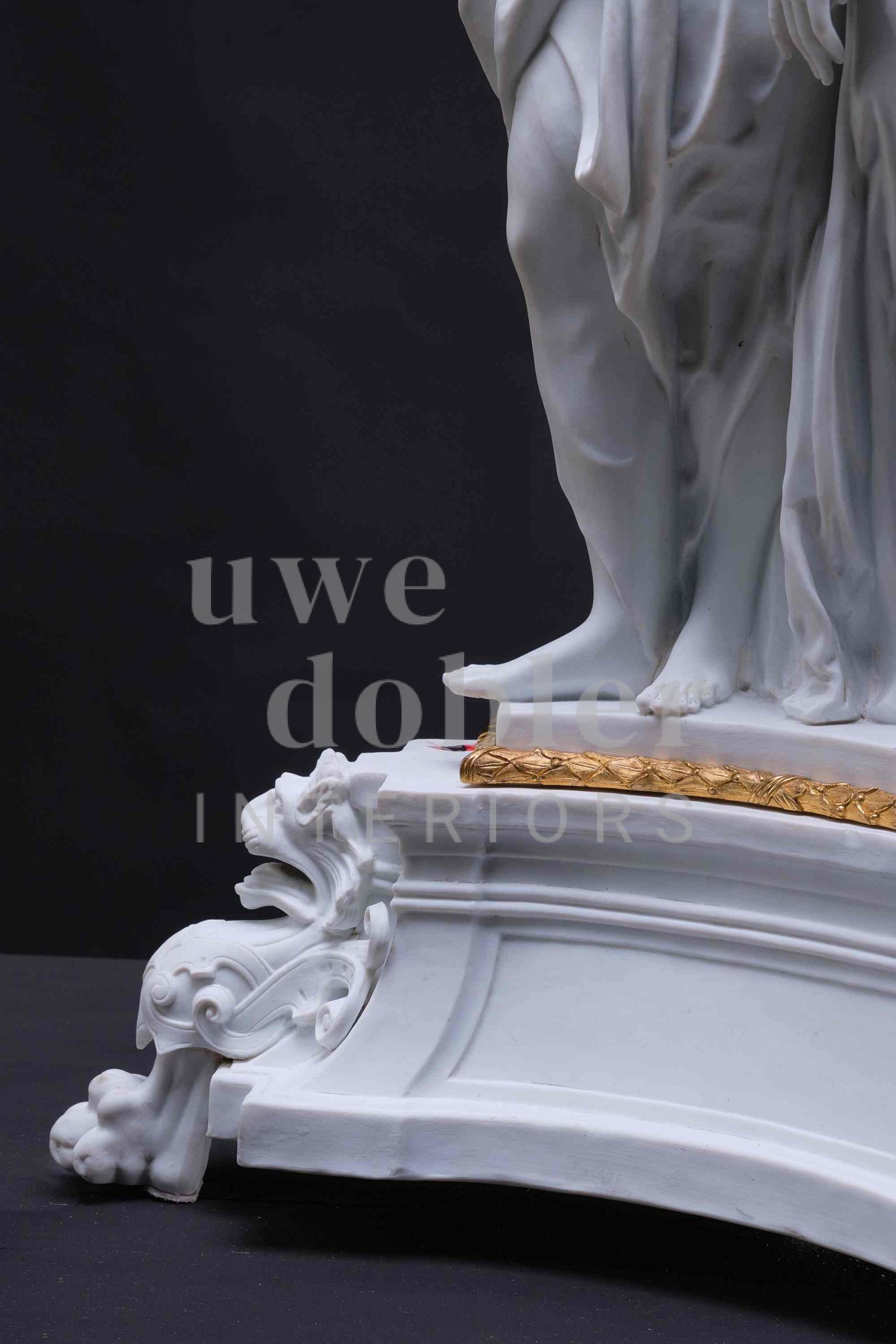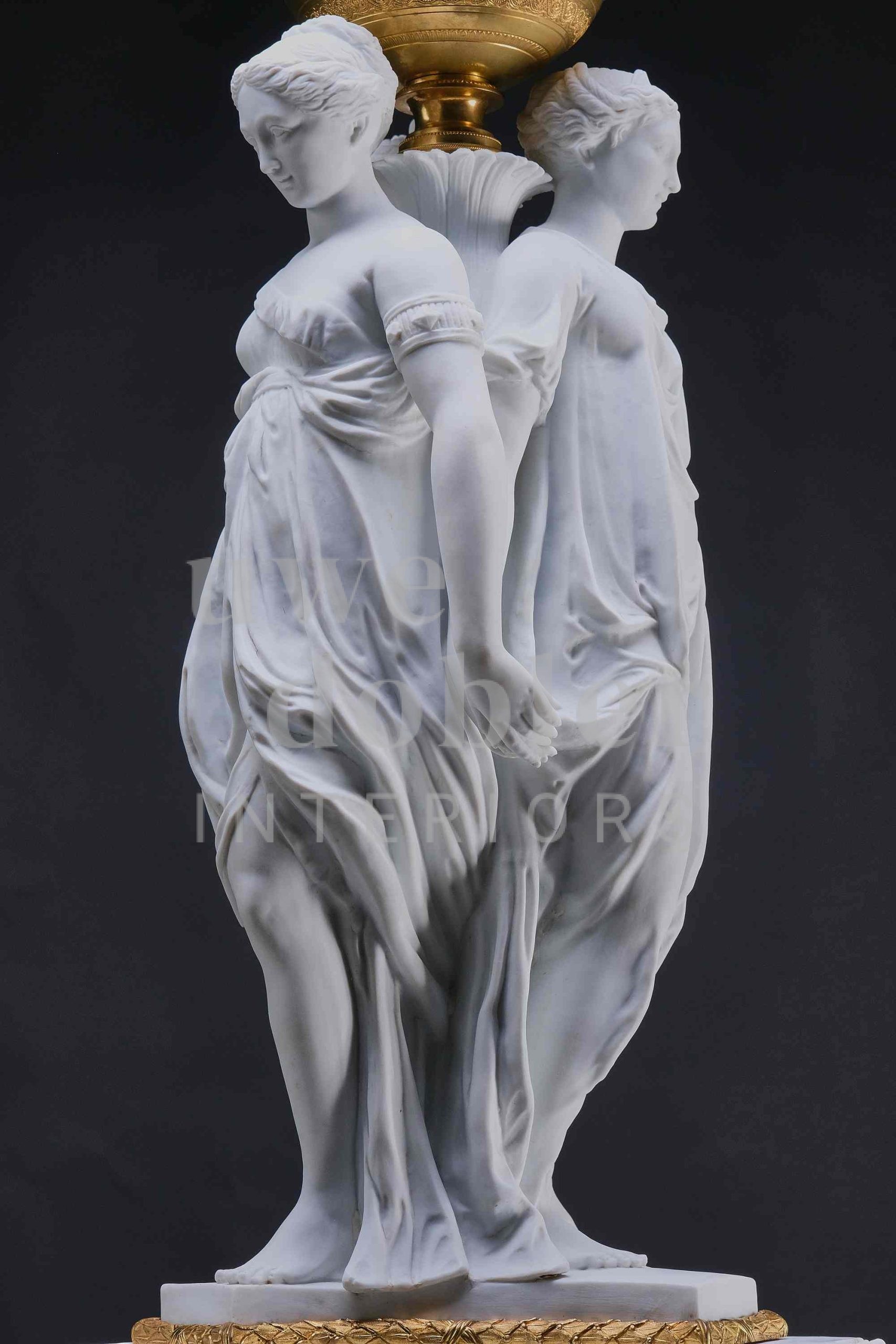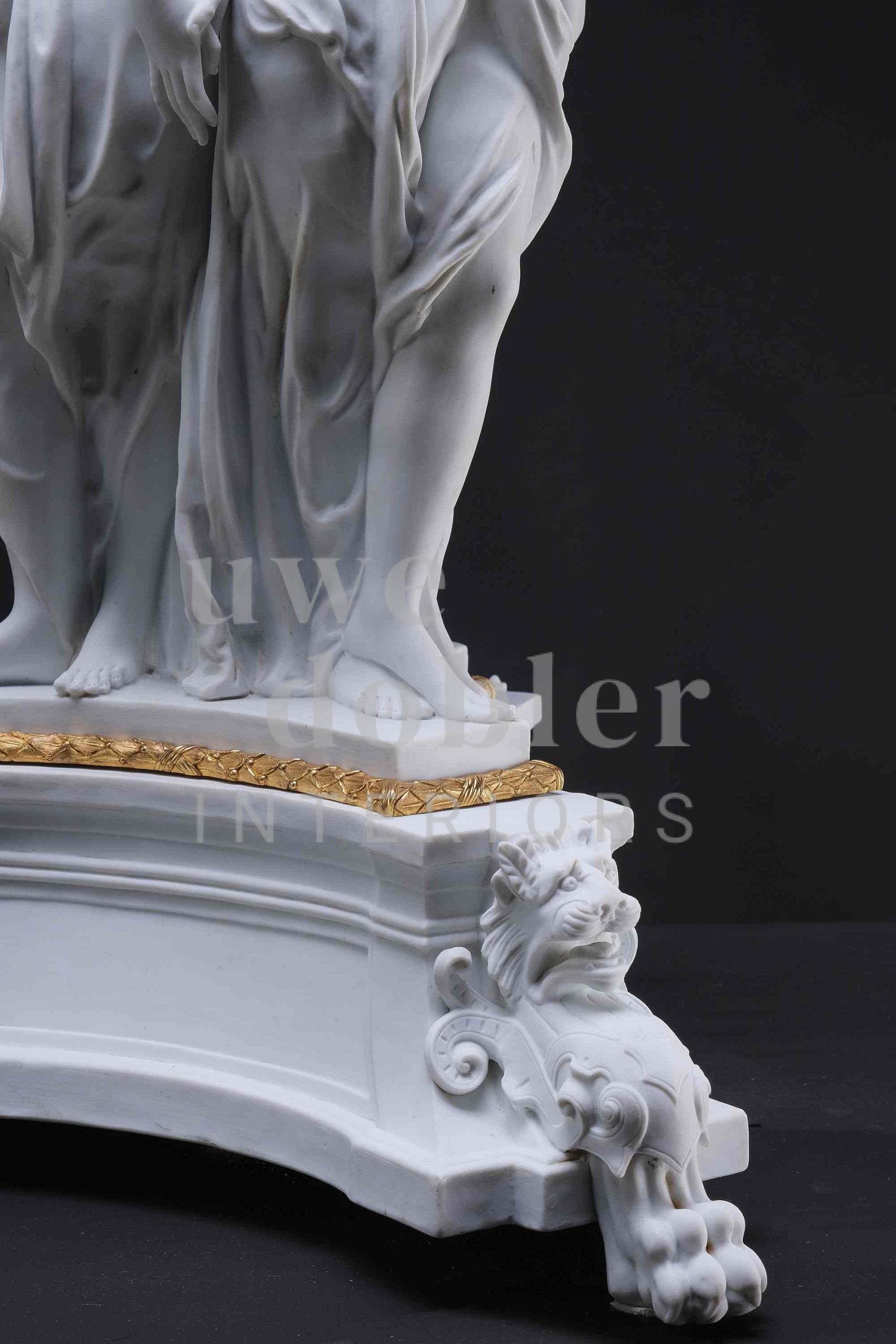It is not possible to know when this group was made in Sèvres, as we do not know any comparison pieces and the hallmark does not allow us to situate it in time. It seems to date from the mid-19th century, as the gilded bronze mounts also correspond to this period.
It is interesting to note the size of the shaped pieces, which sometimes caused small deep firing cracks, probably already repaired by the factory.
The fineness of the fired porcelain cannot be surpassed. The sharpness of the contours is at the limit of what is possible with this technique.
Here is some more information about the history of the model:
Placed in the Orléans chapel of the Célestins convent church in Paris (original arrangement known from a drawing in the Gaignières collection). Group of the Three Graces, commissioned from Pilon and paid for between 1561 and 1566. Base executed by Dominique Florentin after a model by Jean Picard, known as Leroux (paid in 1561), by contract of 18 June 1561. Copper vase representing the king’s heart carried by the Graces, cast by Benoît Boucher after a model by Jean Picard, paid in 1561 (destroyed during the Revolution and replaced by a wooden vase during the Restoration). Confiscated during the Revolution. Entered the deposit of the Petits-Augustins in 1791/1792. Musée des Monuments français, 1795-1816. Allocated to the Louvre by ministerial decision of 8 April 1817. Entered on 14 April 1817.
Measurements:
Height: 86 cm
Diameter: 33 cm


